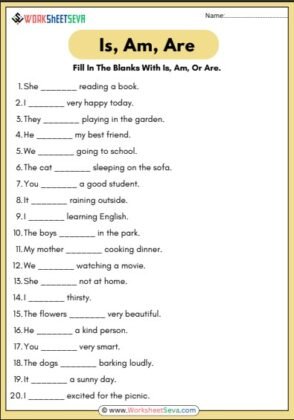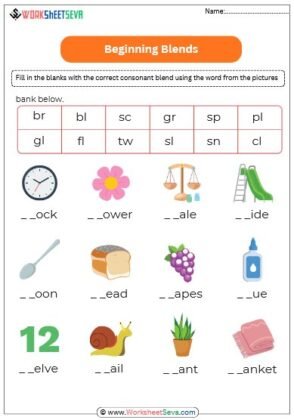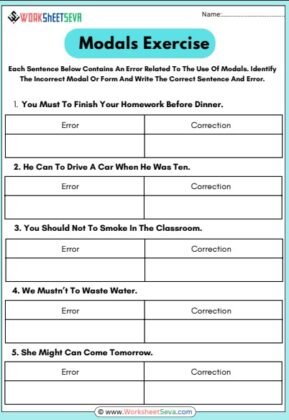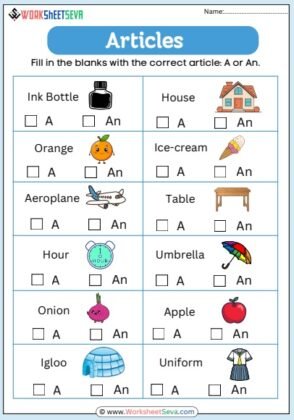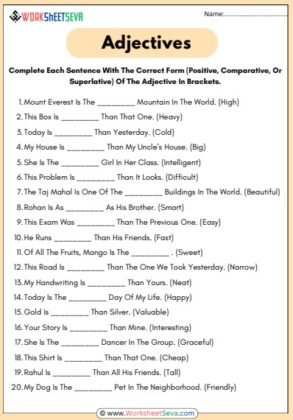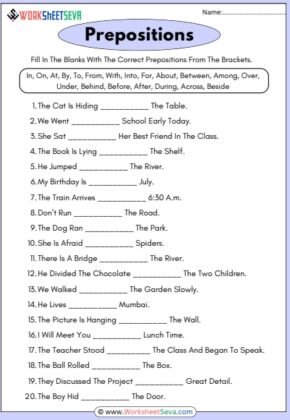Learning how to use determiners correctly is an essential part of mastering English grammar. Whether you’re a student preparing for exams or a teacher looking for engaging classroom material, this “Fill in the Blanks with Suitable Determiners Worksheet” will help you understand and practice determiners in a fun and practical way.
This article gives you a complete explanation of determiners, examples with answers, and a free printable worksheet PDF based on the same questions from the uploaded file — perfect for class 6 to class 10 English grammar learners.
What Are Determiners?
Determiners are words placed before nouns to show which person or thing we are talking about. They help specify how many, which one, whose, or how much of something is being referred to.
For example:
- A boy is running.
- The sun rises in the east.
- Some people are waiting outside.
- Each student received a gift.
In each sentence, the determiner gives extra information about the noun that follows it.
Types of Determiners
Here are the main types of determiners you should know before doing the worksheet:
- Articles:a, an, the
Used before nouns to define them as specific or general.- a and an → used with singular countable nouns.
- the → used for specific nouns.
- Demonstratives:this, that, these, those
Show which person or thing is being referred to.- This / These → near objects.
- That / Those → far objects.
- Quantifiers: some, any, many, much, few, little, all, both, each, every, either, neither
Indicate quantity or number. - Possessives: my, your, his, her, their, our
Show ownership or possession. - Distributives: each, every, either, neither
Refer to members of a group separately or in pairs.
Fill in the Blanks with Suitable Determiners Worksheet
Below are 20 practice questions taken directly from the uploaded PDF worksheet. Try to fill in the blanks using the most appropriate determiners.
- _______ students in the class could solve the question.
- She bought _______ apples from the market.
- Do you have _______ idea about this topic?
- _______ of the boys has done his homework.
- There isn’t _______ milk left in the fridge.
- _______ book on the shelf belongs to me.
- He doesn’t have _______ friends in this city.
- _______ car parked outside is mine.
- _______ of the answers is correct.
- _______ students were absent today.
- _______ of the two pens do you like?
- _______ water in the tank is dirty.
- We saw _______ people waiting at the bus stop.
- _______ parents love their children.
- _______ umbrella is yours — this one or that one?
- _______ girl who came yesterday is my cousin.
- He didn’t make _______ mistakes in the test.
- _______ of my friends is going on the trip.
- She has _______ confidence in herself.
- _______ students were given prizes.
Fill in the Blanks with Suitable Determiners – Answers and Explanation
- All students in the class could solve the question.
→ “All” is used to refer to the entire group. - She bought some apples from the market.
→ “Some” is used with plural countable nouns for an unspecified quantity. - Do you have any idea about this topic?
→ “Any” is used in questions or negatives. - Each of the boys has done his homework.
→ “Each” refers to every individual in a group. - There isn’t much milk left in the fridge.
→ “Much” is used with uncountable nouns. - The book on the shelf belongs to me.
→ “The” specifies a particular book. - He doesn’t have many friends in this city.
→ “Many” is used with plural countable nouns in negative sentences. - The car parked outside is mine.
→ “The” specifies a definite car. - Neither of the answers is correct.
→ “Neither” means not one or the other. - Few students were absent today.
→ “Few” shows a small number. - Which of the two pens do you like?
→ “Which” is used for choosing between options. - The water in the tank is dirty.
→ “The” is used for specific things already known. - We saw many people waiting at the bus stop.
→ “Many” indicates a large number. - All parents love their children.
→ “All” expresses totality or entirety. - Which umbrella is yours — this one or that one?
→ “Which” is again used for specific choices. - The girl who came yesterday is my cousin.
→ “The” identifies a specific person. - He didn’t make any mistakes in the test.
→ “Any” used in negative sentences. - One of my friends is going on the trip.
→ “One” refers to a single person among many. - She has little confidence in herself.
→ “Little” shows an insufficient quantity (uncountable noun). - All students were given prizes.
→ “All” includes everyone in the group.
This Fill in the Blanks with Suitable Determiners Worksheet with Answers is a perfect tool for English grammar learners. It helps understand where and how to use determiners like a, an, the, some, any, each, every, both, few, little, and many accurately.
By practicing regularly with worksheets like this, you can easily improve your grammar, write more fluently, and perform better in exams.


